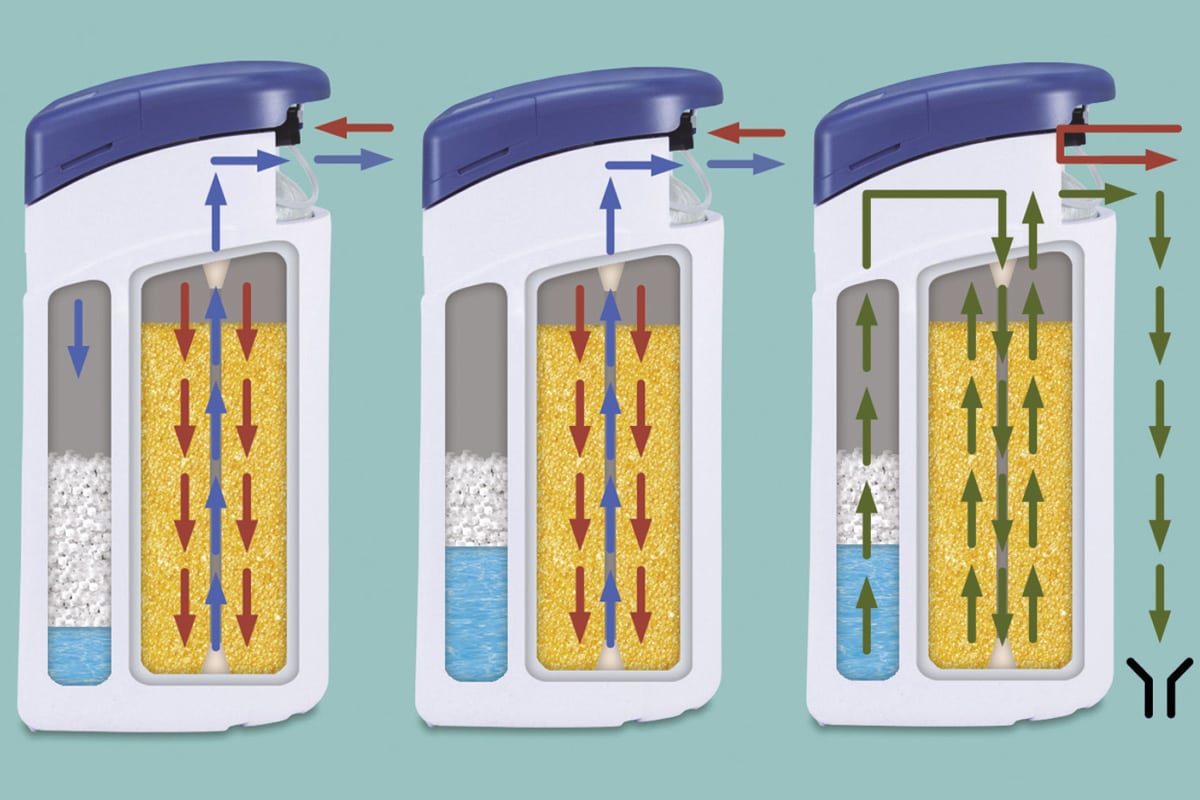Modern water softeners that are used in households work on the principle of ion exchange. In practice, this means that water flowing through a special bed of ion exchange resin loses calcium (Ca2+) and magnesium (Mg2+) ions responsible for water hardness. In their place, the softener introduces neutral sodium ions (Na+). Thanks to this process, soft water is produced, which has a positive effect on the functioning of water systems and household appliances in the house.
With subsequent liters of filtered water, the ion exchange capacity of the resin gradually decreases. As a result, the bed in the water softener requires periodic regeneration to regain its softening properties.
The process of bed regeneration in a water softener
Regeneration of the bed in the water softener is carried out using a brine solution, which is prepared from salt intended for water softeners. The main task of the brine is to regain the ion-exchange capacity of the resin by washing out the collected calcium and magnesium ions from it. During the regeneration process, the bed releases the accumulated ions, and neutral sodium ions are reintroduced in their place. In this way, the resin regains its properties and is ready for the next water softening cycle.
The regeneration of the bed in the water softener is controlled automatically by the control head, which monitors the consumption of resin and the current demand for soft water. Depending on the individual needs of the user and the water softener operating parameters, the regeneration process can take place at regular intervals or based on the actual consumption of the bed.
Water softeners and water magnetizers - differences and efficiency
Unlike water softeners operating on the principle of ion exchange, water magnetizers do not affect the chemical composition of water, but only change the behavior of calcium and magnesium ions in the water stream. Thanks to this, hardness deposits are not deposited on the surfaces of pipes and internal elements of household appliances. However, water magnetizers have a point effect, which means that their effectiveness is limited to a specific section of the water system.
Water softeners, thanks to their operation based on ion exchange, provide a comprehensive solution to the problem of water hardness. Installed at the water inlet to the building, water softeners effectively reduce its hardness for the entire house installation. As a result, there is a lower risk of deposits, related to water hardness, in installations, pipes and household appliances.
Safety of using water softeners in households
Water treated with water softeners based on ion exchange is safe for health and can be used for food purposes. However, it is worth remembering that water softeners introduce small amounts of sodium into it. For people who must follow a low-salt diet, it is recommended that you consult your doctor before using a water softener at home.
Choosing the right water softener
Choosing the right water softener depends on many factors, such as water hardness, household size, water consumption, and user preferences. There are various models of water softeners available on the market, which differ in operating parameters, bed capacity and additional functions.
Before buying a water softener, it is worth carrying out a water hardness test and assessing individual household needs. Only then can you choose the right model of water softener that will work effectively in a given water system. It is also a good idea to consult a water treatment specialist who will help you choose the right device.



